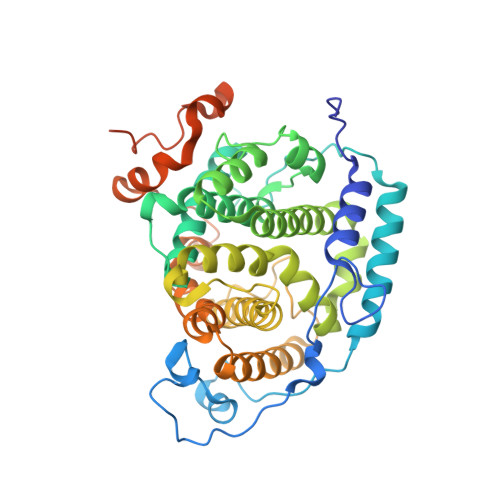Understanding and Engineering the Stereoselectivity of Humulene Synthase.
Schotte, C., Lukat, P., Deuschmann, A., Blankenfeldt, W., Cox, R.J.(2021) Angew Chem Int Ed Engl 60: 20308-20312
- PubMed: 34180566
- DOI: https://doi.org/10.1002/anie.202106718
- Primary Citation of Related Structures:
7OC4, 7OC5, 7OC6 - PubMed Abstract:
The non-canonical terpene cyclase AsR6 is responsible for the formation of 2E,6E,9E-humulene during the biosynthesis of the tropolone sesquiterpenoid (TS) xenovulene A. The structures of unliganded AsR6 and of AsR6 in complex with an in crystallo cyclized reaction product and thiolodiphosphate reveal a new farnesyl diphosphate binding motif that comprises a unique binuclear Mg 2+ -cluster and an essential K289 residue that is conserved in all humulene synthases involved in TS formation. Structure-based site-directed mutagenesis of AsR6 and its homologue EupR3 identify a single residue, L285/M261, that controls the production of either 2E,6E,9E- or 2Z,6E,9E-humulene. A possible mechanism for the observed stereoselectivity was investigated using different isoprenoid precursors and results demonstrate that M261 has gatekeeping control over product formation.
Organizational Affiliation:
Institute for Organic Chemistry and BMWZ, Leibniz Universität Hannover, Schneiderberg 38, 30167, Hannover, Germany.




















